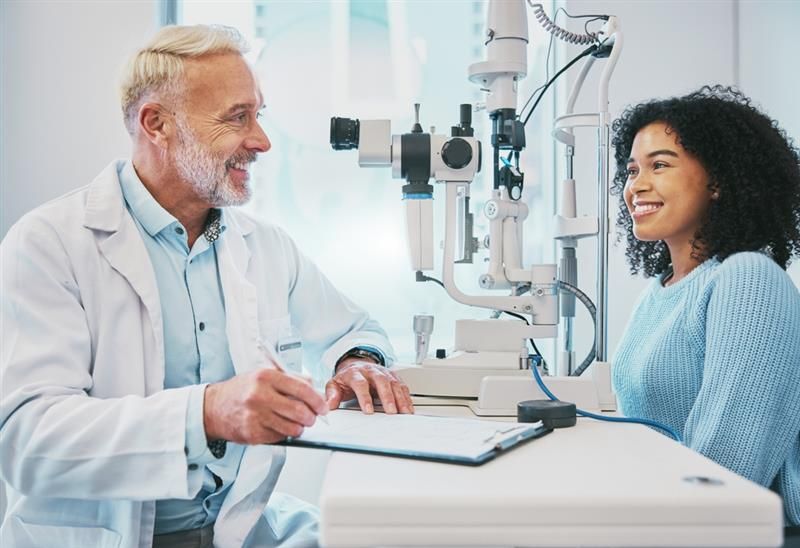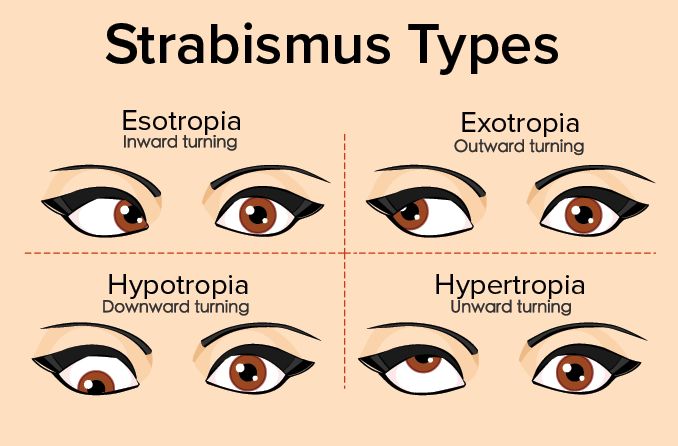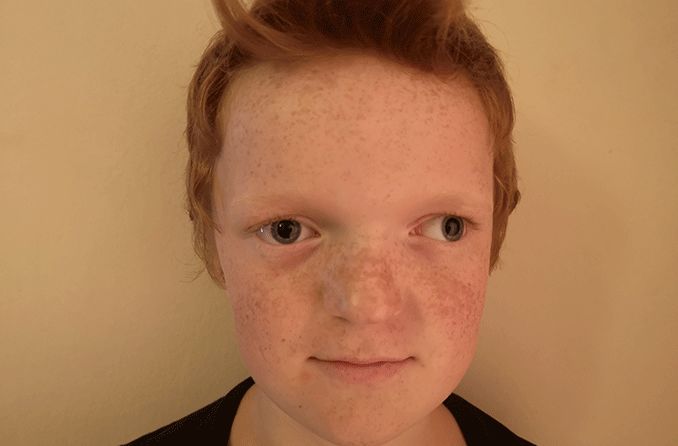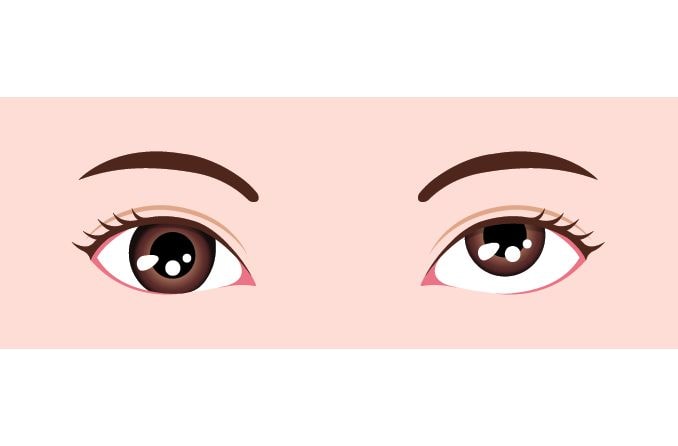Autism and vision
Autism spectrum disorder (ASD) can affect someone’s eyes and vision in various ways. As a result, their visual needs and responses to care can vary. Prioritizing accessible, personalized care is key to help ensure that vision concerns aren’t missed or misunderstood.
Autistic individuals often go without routine eye exams, even though they face a higher chance of certain eye conditions.
Some find it hard to explain changes in their eyesight. Others might show signs through behavior, such as:
- Squinting
- Avoiding bright lights
- Resisting eye contact
These signs can be misunderstood if vision isn’t considered part of the issue. Addressing eye health can help make their care more complete and responsive to their needs.
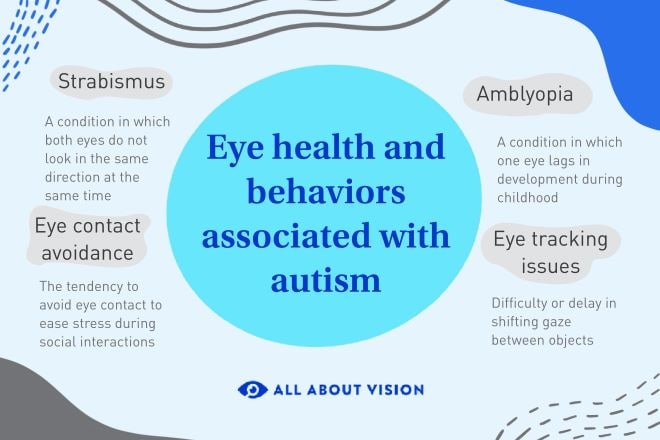
Common vision problems in autism
Autistic people face distinct visual challenges. These can change how they see and engage with the world. Researchers are studying the link between autism and vision health. Some eye problems happen more often in people with autism. These issues can include:
- Difficulty focusing
- Eye alignment issues
- Reduced visual sharpness
- Differences in visual processing
Addressing these concerns can help autistic individuals get the support they need. This support leads to better visual comfort and improved daily functioning. Some of these conditions include:
Strabismus and amblyopia
Visual issues, such as strabismus and amblyopia, are common in autistic people. These conditions can affect how they interact with their environment. Fixing these problems can boost visual comfort and well-being.
Strabismus
Strabismus occurs when the eyes are not aligned. While one eye stays focused forward, the other may turn inward, outward, upward or downward. This can interfere with depth perception, and the brain may begin to block input from the misaligned eye.
Types of strabismus can include:
- Exotropia – One or both eyes turn outward
- Esotropia – One or both eyes turn inward
- Hypertropia – One eye points upward compared to the other
Some studies say exotropia is the most common type in autistic people. Others find higher rates of esotropia. These differences show why personalized eye exams are so important.
Knowing the type of eye misalignment helps determine the right treatment. Treatment may involve:
- Specialized eye drops
- Corrective glasses
- Eye patching therapy
- Eye muscle surgery
Amblyopia
Amblyopia, also known as lazy eye, occurs when one eye does not reach normal visual development. This usually happens during early childhood. The brain favors the stronger eye, which causes the weaker eye to become less responsive.
In autistic individuals, amblyopia is a more prevalent eye condition. It can happen if eye misalignment goes untreated or if there are refractive differences between the eyes. Treatment for amblyopia often involves methods to strengthen the weaker eye, such as:
- Eye patching therapy
- Specialized eye drops
- Eyeglasses with a special lens
Eye tracking and binocular vision issues
Many autistic people have trouble with how their eyes move or work together, including:
Eye tracking
Eye tracking (visual tracking) is the ability of the eyes to follow a moving object. Studies show that autistic people may take longer to shift their gaze from one thing to another. This may also explain why social interactions can be harder for them.
Binocular vision issues
Binocular vision dysfunction (BVD) occurs when the eyes do not work together to form a single, clear image. It includes several types of problems where the brain and eyes have trouble working together. An example is convergence insufficiency, which makes focusing on nearby things difficult.
Even small misalignments can make it hard for the brain to combine images from both eyes into one clear picture. This can lead to a range of symptoms, including:
- Headaches or blurry vision
- Dizziness or balance problems
- Anxiety in crowded or large spaces
- Difficulty with reading or focusing
Autism and eye contact
Autistic individuals often process social cues differently. This can make eye contact feel unnatural or uncomfortable. It may not come automatically during conversation, even when connection is desired.
Trying to listen and look at someone’s face at the same time can feel overwhelming for many autistic individuals. Avoiding eye contact can make it easier to focus, ease stress and conserve energy during social interactions.
For many autistic individuals, social interactions may not align with typical expectations. So, eye contact might not happen in the way others are used to.
The role of vision therapy for autism
Specialized behavioral vision therapy may be helpful in aiding autistic individuals. It works to improve vision and how the brain processes what a person sees. This can allow for a better understanding of visual input.
Vision therapy can be especially useful for autistic individuals who experience binocular vision dysfunction. With the use of eye exercises, vision therapy can help train their eyes to move and focus together more effectively.
Treatment plans are customized for each person. They are designed based on specific vision needs and goals.
Eye exams and diagnosis
Routine eye exams are key for optimal eye health. This is especially important for autistic individuals. Along with other tests, these exams also assess visual acuity, which refers to how clearly a person sees at different distances. Regular screenings help catch these and other issues early.
Importance of regular eye exams
Comprehensive eye exams are important for all individuals to catch vision, eye health and other health issues as early as possible. For autistic individuals, eye exams are especially essential since some vision conditions can be more prevalent, including amblyopia, strabismus and other disorders that affect how the eyes work. In some cases, these conditions may be linked to behavior changes, and correcting vision can make a difference.
Diagnostic tools and techniques
Eye exams may be approached differently for autistic individuals. This is true, especially when communication or sensory needs are part of the experience. Providers may use a mix of tools and strategies. This can make the exam feel more manageable and supportive. Some of these include:
- Step-by-step demonstrations – Showing how tools will be used ahead of time, either on a caregiver or a doll, can help the patient feel more prepared.
- Gentle eye drop options – During a dilated eye exam, dilating drops can be given while the eyes are closed, or families can practice with saline drops at home before the visit.
- Shorter visits – Breaking the exam into two separate, shorter visits can make it easier for patients who may not tolerate a long appointment.
Challenges and solutions
Autistic people often face special challenges in how they view and react to the world. Vision problems can make sensory overload and social interaction challenges even harder. Fortunately, there are ways to help manage these challenges and create more supportive environments.
Addressing sensory overload
For many autistic individuals, visual input can become overwhelming. By identifying what causes overstimulation and adjusting it, you can help support a sense of calm.
Some strategies to reduce visual sensory overload can include:
- Using natural or soft lighting
- Steering clear of flickering or fluorescent bulbs
- Wearing sunglasses or tinted lenses
- Keeping the space organized
Enhancing communication and social interaction
Along with sensory concerns, picking up on social cues can be difficult for autistic people. When vision problems are also present, it can make social interactions and communication even more challenging.
Improving vision can make these cues more recognizable, even if an autistic individual does not always respond to them in typical ways. Clear vision boosts awareness, which can lead to greater self-confidence and better learning. This may help with social connection and communication over time.
Vision and autism: Bridging the gap for better understanding
Vision plays an important role in how people take in and respond to the world. Many autistic people have vision challenges that often go unnoticed. Sometimes, these issues are confused with other problems. These challenges may involve how the eyes work together or how visual information is understood.
Being mindful of potential vision issues can aid in learning and enhance everyday interactions. A detailed eye exam may provide helpful answers.
